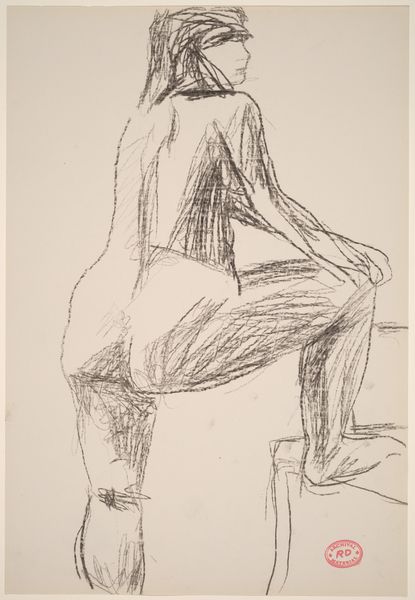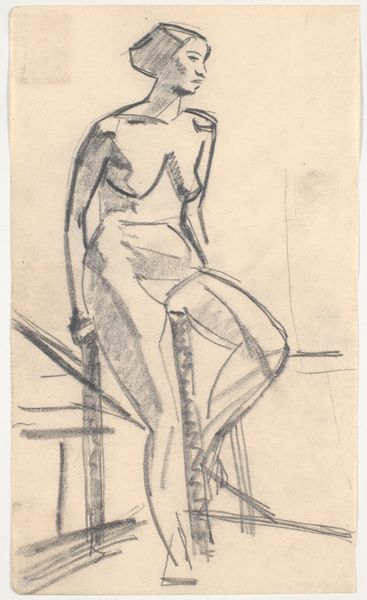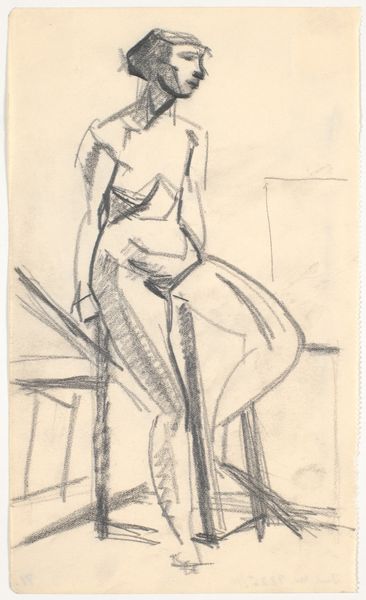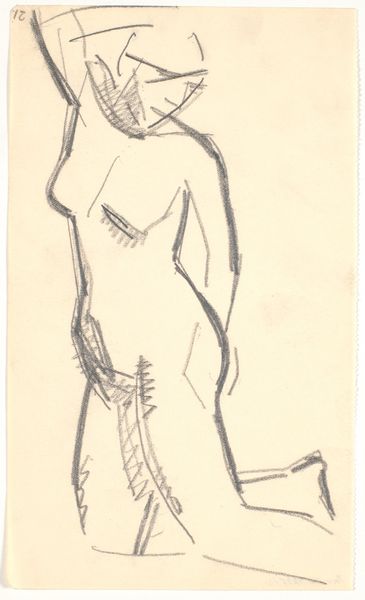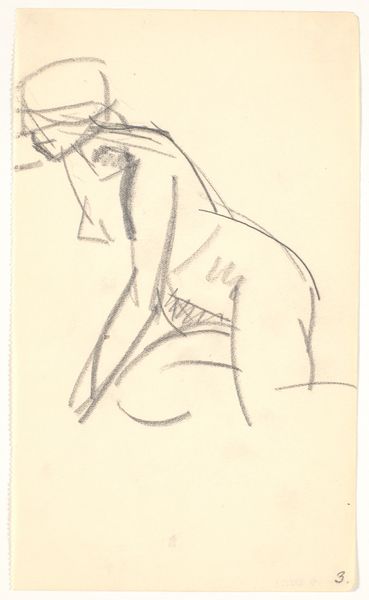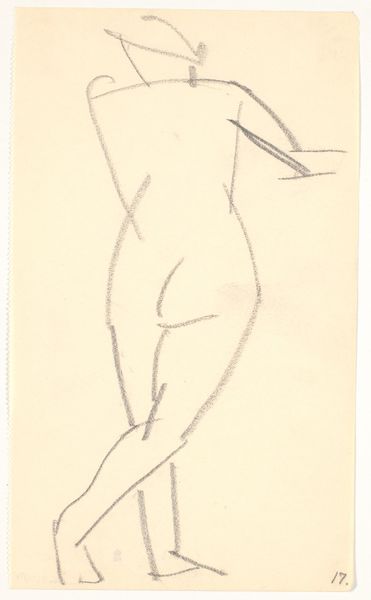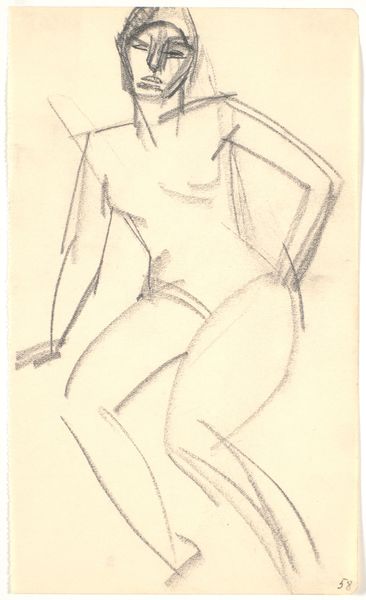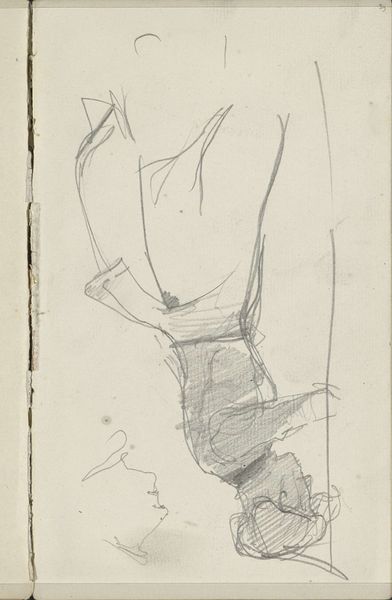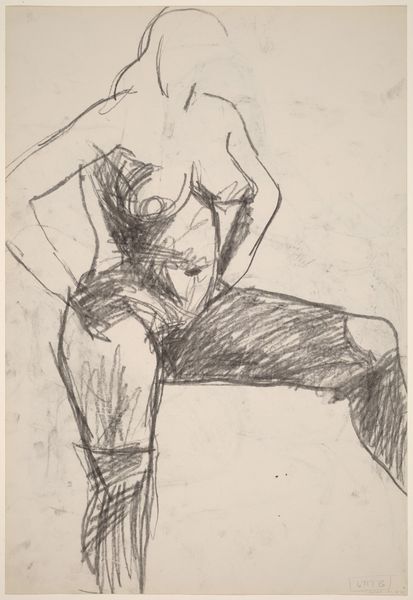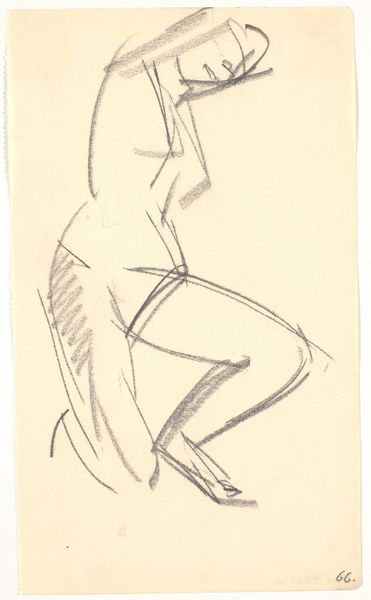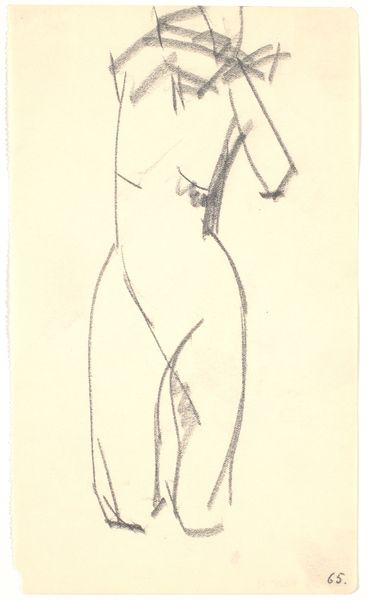
drawing, pencil
#
portrait
#
drawing
#
ink drawing
#
pencil
#
nude
Dimensions: 209 mm (height) x 124 mm (width) (bladmaal)
Editor: We're looking at "Siddende model" by Karl Isakson, made sometime between 1914 and 1915. It’s a pencil and ink drawing of a nude figure. It feels like a very quick sketch, capturing just the essential lines. What's your read on this piece? Curator: This drawing speaks volumes about the socio-cultural attitudes towards the human body in the early 20th century, specifically the artist's interest in Modernist figuration. Notice how Isakson renders the figure, not as an idealized form, but with a raw immediacy. The stark lines are a reflection, perhaps, of a changing society and its emerging attitudes towards naturalism. How does it challenge the traditionally academic approach to the nude, would you say? Editor: I see your point about the raw immediacy of the form going against academic nudes that valorize idealism. Is the chair also of symbolic importance? Curator: Yes, the chair can be viewed as an emblem of confinement and also comfort. The loose linearity, though, is quite important for understanding how it subverts class assumptions around staged nude portraits, offering a democratized gaze into the everyday figure rather than an objectified aesthetic, typical for artwork made during this era. Editor: That makes a lot of sense, thinking about it in terms of access and the demystification of the artistic gaze. I had not thought about the artist challenging existing social stratifications, or disrupting norms, so prevalent at the time. Curator: Precisely. And by focusing on the body without idealizing it, it's possible that Isakson opens space to ponder shifting norms of bodily awareness at this moment. The chair, while humble, gives this private moment a distinctly civic character through its ubiquity as social prop. Editor: Thinking about the politics of art within historical and social contexts has completely changed how I view Isakson's drawing, especially now that it represents challenges to conventional depictions. Thanks!
Comments
No comments
Be the first to comment and join the conversation on the ultimate creative platform.
